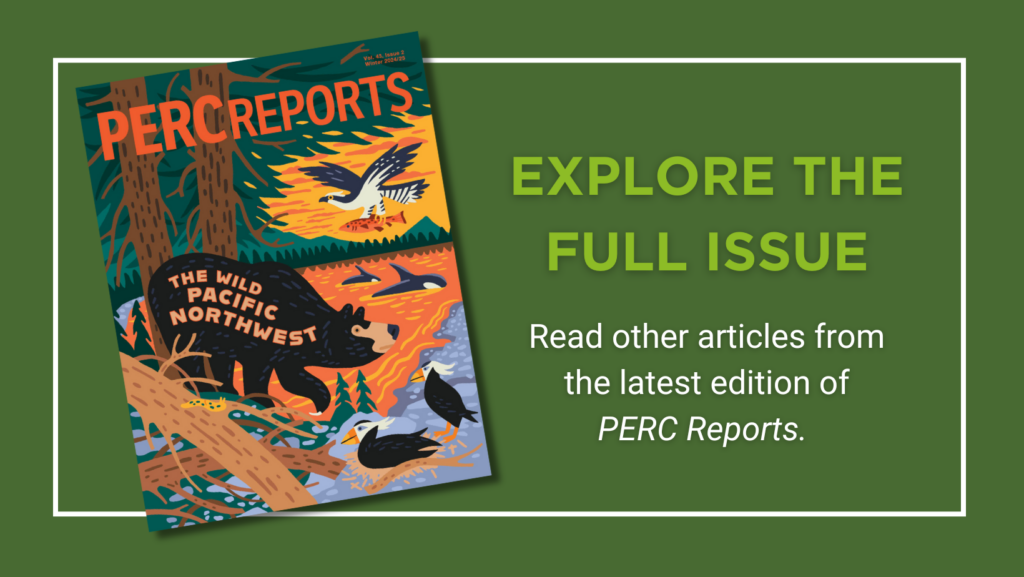
Years ago, I spent summers as a backcountry ranger in Washington’s Olympic National Park. My days were spent hiking through the lush depths of the Hoh Rainforest, where mist clings to moss-covered trees, and climbing the rugged slopes of Mount Olympus, where glaciers carve through rocky landscapes. It was there that I fell in love with the Pacific Northwest and the iconic species that define it.
The Pacific Northwest evokes images of old-growth forests, rugged coastlines, and ecosystems that are as diverse as they are complex. Yet today, conserving these unique landscapes requires innovative thinking—and a willingness to look beyond traditional approaches.
This special issue of PERC Reports explores creative ideas to address the conservation challenges of this remarkable place. It spotlights market solutions that have the potential to benefit the wildlife, people, and communities that inhabit the region.
Kicking off, Tate Watkins explores efforts to bring sea otters back to Northern California and Oregon—an idea with significant ecological benefits, but also one that has raised concerns for local fishing communities. It’s been more than a century since sea otters called these coastal areas home. Can they be reintroduced without alienating the fishermen who share these shores?
Next, James Workman takes us underwater to examine the fight to save America’s kelp forests, which play a vital role in supporting marine biodiversity. As sea urchins decimate kelp beds off the Pacific Coast, Workman investigates a creative solution: cultivating a taste for urchin. This culinary approach could help control urchin populations, with widespread benefits for kelp forests.
Kelvey Vander Hart dives into the plight of Southern Resident orcas in the Salish Sea, one of the most beloved orca populations in the world. With shipping vessel noise disrupting the orcas’ ability to hunt, Vander Hart explores a unique proposal to create a market for tradeable noise permits, balancing commerce with conservation in one of the world’s busiest waterways.
Then, Jonathan Wood takes us to Oregon’s Elliott State Forest, where forestlands are facing competing pressures. In an ongoing battle to protect endangered marbled murrelets, Wood explains how current policy fuels zero-sum litigation instead of fostering cooperative alternatives that could better serve both people and wildlife.
Along the way, we explore issues ranging from water markets and salmon recovery to tribal forestry and grizzly bear reintroduction. It’s a reflection of how deeply intertwined the region’s ecological and human landscapes are—and the need for creative, market approaches to help navigate these complex challenges.
This collection of stories reflects PERC’s mission to bring creativity to conservation, turning challenges into opportunities. With these innovative approaches, we can forge a future where the Pacific Northwest’s iconic species and landscapes can continue to thrive.




